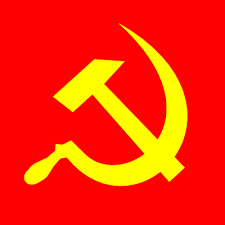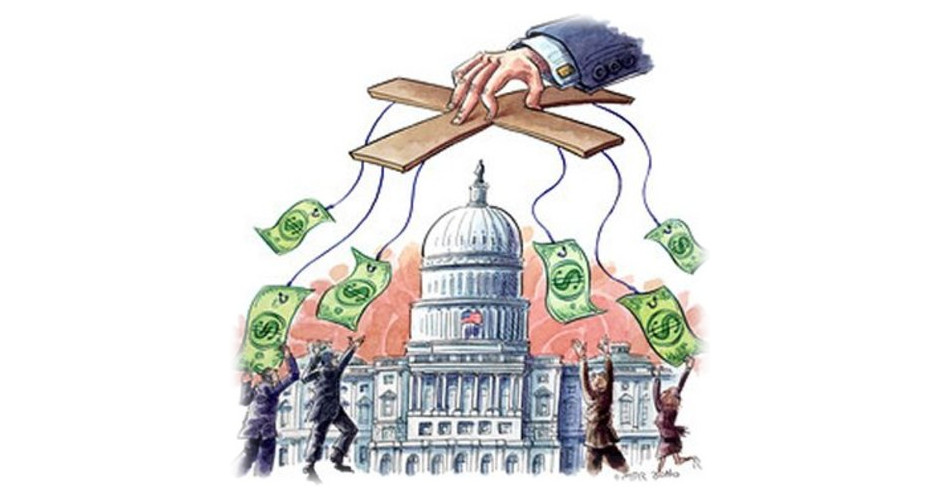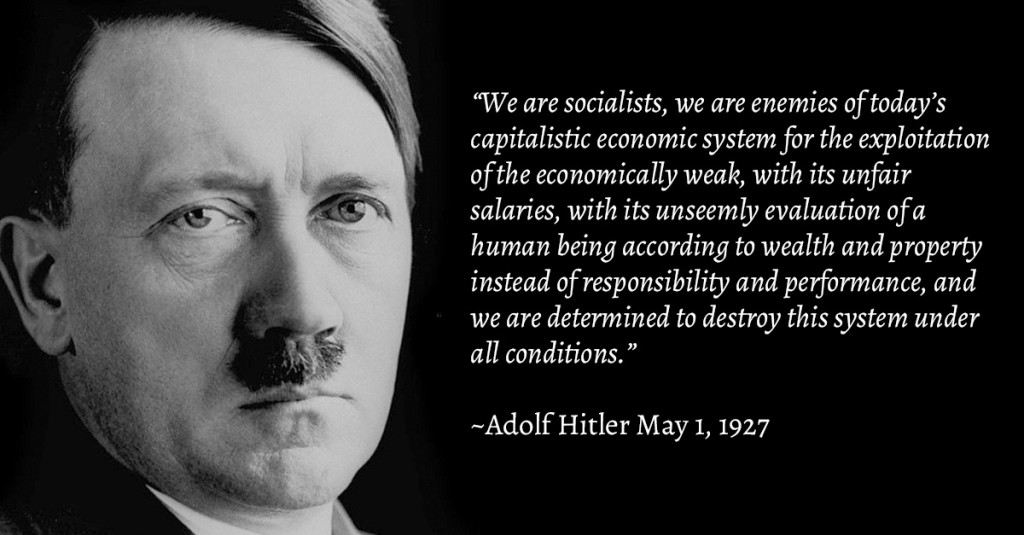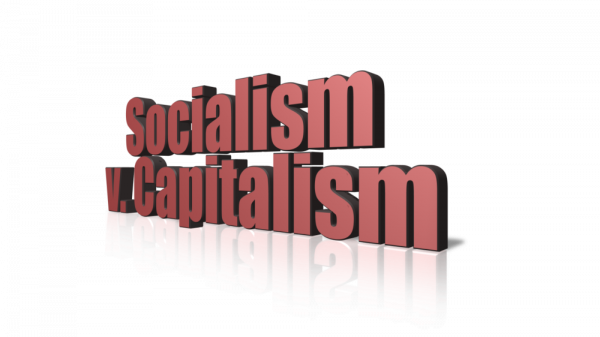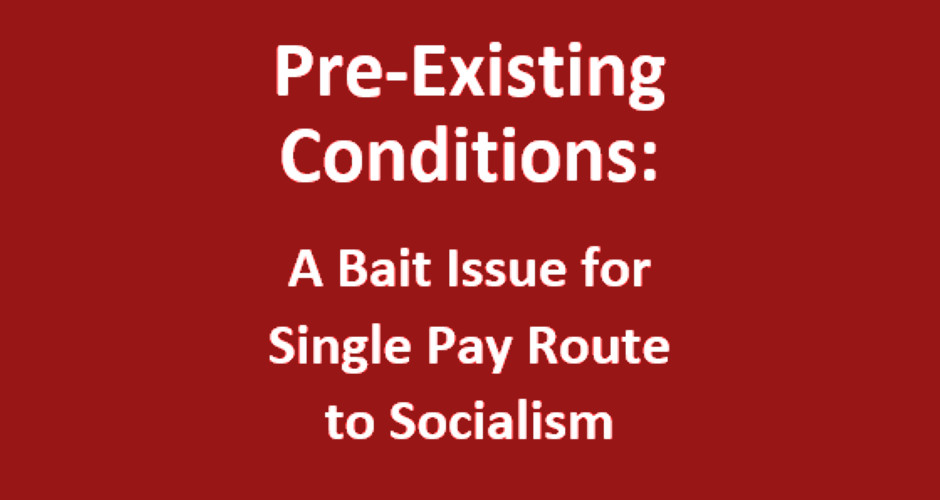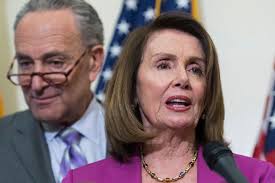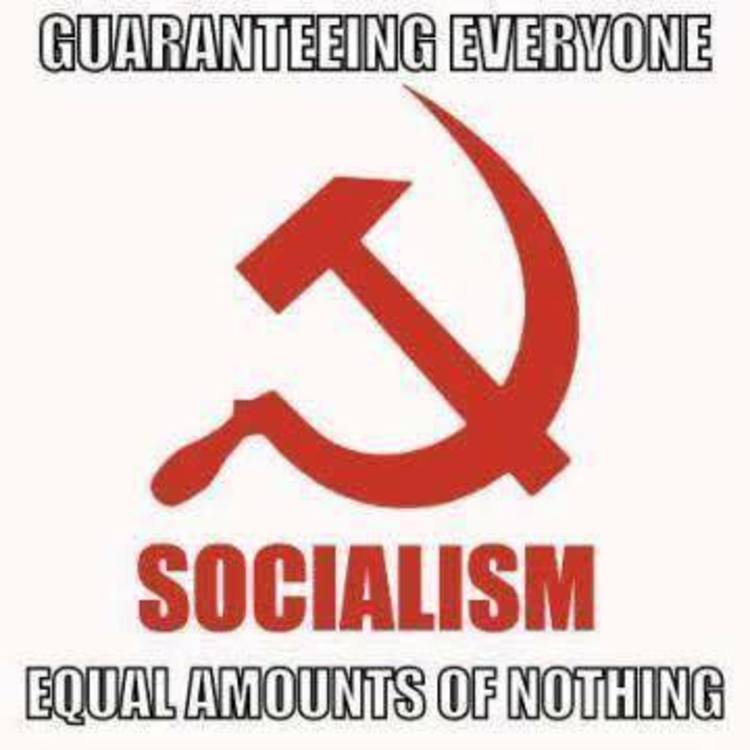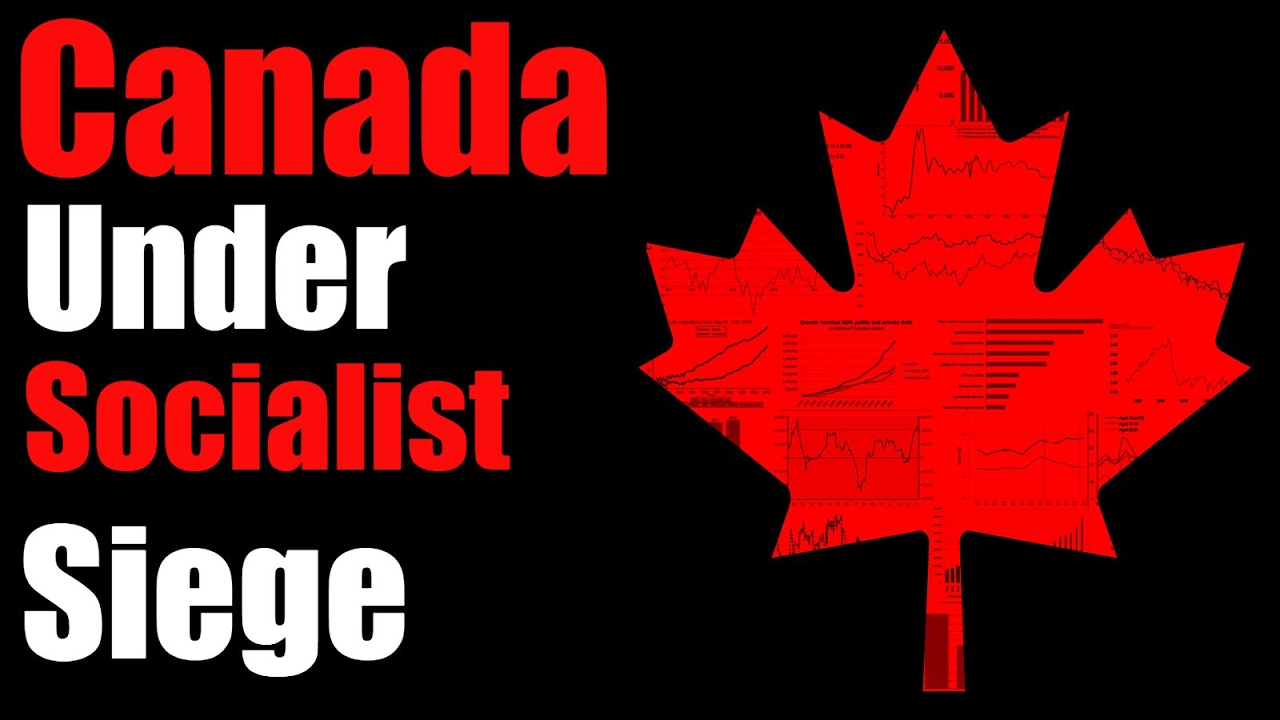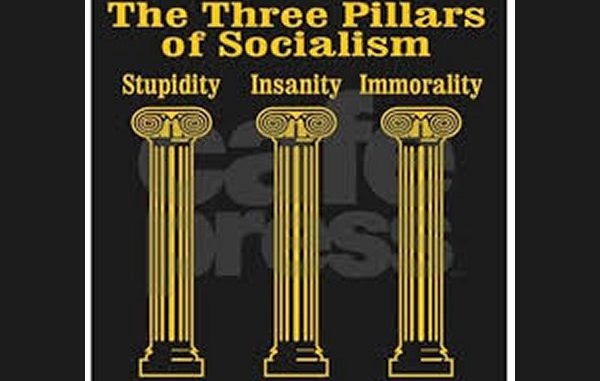From: fee.org ByRichard M. Ebeling
 In the nineteenth century, critics of socialism generally made two arguments against the establishment of a collectivist society. First, they warned that under a regime of comprehensive socialism the ordinary citizen would be confronted with the worst of all imaginable tyrannies. In a world in which all the means of production were concentrated in the hands of the government, the individual would be totally and inescapably dependent on the political authority for his very existence.
In the nineteenth century, critics of socialism generally made two arguments against the establishment of a collectivist society. First, they warned that under a regime of comprehensive socialism the ordinary citizen would be confronted with the worst of all imaginable tyrannies. In a world in which all the means of production were concentrated in the hands of the government, the individual would be totally and inescapably dependent on the political authority for his very existence.
The socialist state would be the single monopoly provider of employment and all the essentials of life. Dissent from or disobedience to such an all-powerful state could mean material destitution for the critic of those in political authority. Furthermore, that same centralized control would mean the end to all independent intellectual and cultural pursuits. What would be printed and published, what forms of art and scientific research permitted, would be completely at the discretion of those with the power to determine the allocation of society’s resources. Man’s mind and material well-being would be enslaved to the control and caprice of the central planners of the socialist state.
Second, these nineteenth-century anti-socialists argued that the socialization of the means of production would undermine and fundamentally weaken the close connection between work and reward that necessarily exists under a system of private property. What incentive does a man have to clear the field, plant the seed, and tend the ground until harvest time if he knows or fears that the product to which he devotes his mental and physical labor may be stolen from him at any time?
Similarly, under socialism man would no longer see any direct benefit from greater effort, since what would be apportioned to him as his “fair share” by the state would not be related to his exertion, unlike the rewards in a market economy. Laziness and lack of interest would envelop the “new man” in the socialist society to come. Productivity, innovation, and creativity would be dramatically reduced in the future collectivist utopia.
The twentieth-century experiences with socialism, beginning with the communist revolution in Russia in 1917, proved these critics right. Personal freedom and virtually all traditional civil liberties were crushed under the centralized power of the Total State. Furthermore, the work ethic of man under socialism was captured in a phrase that became notoriously common throughout the Soviet Union: “They pretend to pay us, and we pretend to work.”
The defenders of socialism responded by arguing that Lenin’s and Stalin’s Russia, Hitler’s National Socialist Germany, and Mao’s China were not “true” socialism. A true socialist society would mean more freedom, not less, so it was unfair to judge socialism by these supposedly twisted experiments in creating a workers’ paradise. Furthermore, under a true socialism, human nature would change, and men would no longer be motivated by self-interest but by a desire to selflessly advance the common good.
In the 1920s, 1930s, and 1940s, the Austrian economists, most notably Ludwig von Mises and Friedrich A. Hayek, advanced a uniquely different argument against a socialist society. They, Mises, in particular, accepted for the sake of argument that the socialist society would be led by men who had no wish to abuse their power and crush or abrogate freedom, and further, that the same motives for work would prevail under socialism as under private property in the market economy.
Even with these assumptions, Mises and Hayek devastatingly demonstrated that comprehensive socialist central planning would create economic chaos. Well into the twentieth century, socialism had always meant the abolition of private property in the means of production, the end of market competition by private entrepreneurs for land, capital, and labor, and, therefore, the elimination of market-generated prices for finished goods and the factors of production, including the wages of labor.
Yet, without such a competitively generated system of market prices, Mises argued, there would be no method for rational economic calculation to determine the least-cost methods of production or the relative profitability of producing alternative goods and services to best satisfy the wants of the consuming public. It may be possible to determine the technologically most efficient way to produce some good, but this does not tell us whether that particular method of production is the most economically efficient way to do it.
Mises explained this in many different ways, but we can imagine a plan to construct a railway through a mountain. Should the lining of the railway tunnel be constructed with platinum (a highly durable material) or with reinforced concrete? The answer to that question depends on the value of the two materials in their alternative uses. And this can be determined only through knowing what people would be willing to pay for these resources on the market, given competing demand and uses.
Prices Encapsulate People’s Valuations
On the free market, private entrepreneurs express their demand through the prices they are willing to pay for land, capital, resources, and labor. The entrepreneurs’ bidding is guided by their anticipation of the demand and prices consumers may be willing to pay for the goods and services that can be produced with those factors of production. The resulting market prices encapsulate the estimates of millions of consumers and producers concerning the value and opportunity costs of finished goods and the scarce resources, capital, and labor of the society.
But under comprehensive socialist central planning, there would be no institutional mechanism to discover these values and opportunity costs. With the abolition of private ownership in the means of production, no resources could be purchased or hired. There would be no bids and offers expressing what the members of society thought the resources were worth in their alternative employments. And without bids and offers, there would be no exchanges, out of which emerges the market structure of relative prices. Thus socialist planning meant the end of all economic rationality, Mises said—if by rationality we mean an economically efficient use of the means of production to produce the goods and services desired by the members of society.
Given that nothing ever stands still—that consumer demand, the supply of resources and labor, and technological knowledge are continually changing—a socialist planned economy would be left without the rudder of economic calculation to determine whether what was being produced and how was most cost-effective and profitable.
Neither Mises nor Hayek ever denied that a socialist society could exist or even survive for an extended period of time. Indeed, Mises emphasized that in a world that was only partly socialist, the central planners would have a price system to rely on by proxy, that is, by copying the market prices in countries where competitive capitalism still prevailed. But even this would only be of approximate value since the supply-and-demand conditions in a socialist society would not be a one-to-one replica of the market conditions in a neighboring capitalist society.
Socialist and even some pro-market critics of Mises have sometimes ridiculed his supposed extreme language that socialism is “impossible.” But by “impossible,” Mises simply meant to refute the socialist claim in the Nineteenth and early twentieth centuries that a comprehensive centrally-planned economy would not merely generate the same quantity and quality of goods and services as a competitive market economy, but would far exceed it. Socialism could not create the material paradise on earth the socialists had promised. The institutional means (central planning) that they proposed to achieve their stated ends (a greater material prosperity than under capitalism) would instead lead to an outcome radically opposite to what they said they wanted to achieve.
Mises emphasized that a socialist society also would lack the consumer-oriented activities of private entrepreneurs. In the market economy, profits can be earned only if the means of production are used to serve consumers. Thus in their own self-interest, private entrepreneurs are driven to apply their knowledge, ability, and “reading” of the market’s direction in the most effective way, in comparison to their rivals who are also trying to capture the business of the buying public.
Certainly, incentives motivate the private entrepreneur. If he fails to do better than his rivals, his income will diminish and he may eventually go out of business. But the private entrepreneur, as much as the central planner, would be “flying blind” if he could not function within a market order with its network of competitive prices.
Thus, for Austrian economists like Mises, economic calculation is the benchmark by which to judge whether socialist central planning is a viable alternative to the free-market economy. Without market prices, there can be neither economic calculation nor the social coordination of multitudes of individual consumers and producers with their diverse demands, localized knowledge, and appraisements of their individual circumstances.
Central Planning versus Rational Planning
The pricing system is what gives rationality—an efficient use of resources—and direction to society’s activities in the division of labor, so that the means at people’s disposal may be successfully applied to their various ends. Central planning means the end to rational planning by both the central planners and the members of society since the abolition of a market price system leaves them without the compass of economic calculation to guide them along their way.
In the Soviet Union, for example, the older criticisms of collectivism were verified. The Total State did create a cruel, brutal, and murderous tyranny. And the abolition of private property resulted in weakened and often perverse incentives, in which individual access to wealth, position, and power came through membership in the Communist Party and status within the bureaucratic hierarchy.
In reality, the rulers of the communist countries had other ends than that of the material and cultural improvement of those over whom they ruled. They pursued personal power and privilege, as well as various ideologically motivated goals. They artificially set prices for both consumer goods and resources at levels that had no relationship to their actual demand or scarcity. As a consequence, the degree of misuse of resources was such that virtually all manufacturing or industrial projects in the Soviet Union used up far more raw materials and labor hours per unit of output than anything comparable in the more market-oriented Western economies.
The chaos of the Soviet economy was centered on the lack of a real price system and, therefore, a method of economic calculation. There could not be a real price system in the Soviet Union because it would have required the reversal of the very rationale for the socialist system on which the Soviet rulers’ power was based—government control and central planning of production. And they could not set their network of artificial prices at levels comparable to those in some Western countries because it would have made clear just how misguided their entire planning and distribution process actually was.
Thus, along with the inherent irrationality of the central planning system due to the lack of real prices were the weakened incentives for the ordinary Soviet citizen to be industrious and creative in the official economy, as well as the perverse incentives of the political system in which personal gain was achieved through a near-total disregard for the interests of the wider society. That the Soviet planners had agendas other than serving consumers only further distorted the system. Just how misdirected and inefficient the use of resources were under socialism only became clear after the Soviet Union collapsed and a limited market economy emerged in Russia.
The End of Civilization
In his arguments against socialist central planning, Mises often couched his reasoning in rhetoric that warned of the end of civilization as we know it if the collectivist road were followed. In the 1930s and 1940s, when Mises most forcefully raised these fears, he was far from being alone in this dire warning, given the brutality and violent tyranny then being experienced in Nazi Germany and Stalin’s Soviet Union.
But Mises’s more fundamental point was that the very nature of a socialist system threatened the economic and cultural standard of well-being that Western man had come to take for granted over the preceding hundred years. With every passing day, a socialist system would be less like the market society that preceded it. The allocation of resources, the utilization of capital, and the employment of labor would have to be modified and shifted from previous uses to new ones. If nothing else, the “priorities” of the “workers’ state” would be different from those under decentralized, profit-oriented decision-making. Should a new public hospital be constructed in a particular location, or should the limited resources be assigned to building additional public-housing complexes in a different part of the country? Should a piece of land in a particular area be used for a new “people’s recreational facility” or should it become the site of a new industrial factory?
If a new housing complex is chosen for construction, should it be made mostly of brick and mortar, or of steel and glass? Should the efforts of some scientists be employed for additional cancer research or for possible development of a tastier and longer-lasting chewing gum? What represents the more highly valued use for various resources that can be employed making different types of machines, which could then be used either to produce more books on religion and faith or to increase the productivity of workers in agriculture? Would a new technological idea be worth the investment in time, resources, and labor, even though its payoff may be years away (assuming it worked as initially conceived)?
Without prices for finished goods and the factors of production to provide the information and signals to guide the decision-making, each passing day would mean more such decisions were made in the dark. It would be analogous to sea travelers in the ancient world before the invention of the sextant or the compass. Every movement out of sight of land—the known and the familiar—would be into uncharted waters with no way of knowing the direction or the consequences of the course chosen. Better to stay close to the shore than to explore unknown seas. And if the journey on the open sea under cloud-covered skies is undertaken, it is uncertain where it will lead or whether the shortest and best course has been selected.
It is for reasons such as this that Mises referred to economic calculation as “the guiding star of action under a social system of division of labor. It is the compass of the man embarking upon production.” Thus, even if the rulers of a socialist state were completely benevolent and concerned only with the well-being of their fellow men, without economic calculation a collectivist society potentially faced what Mises titled one of his books, planned chaos.
Thus, the establishment of a comprehensive system of socialist central planning would be equivalent to going back in time, before the institutions of private property and market competition had enabled the utilization of prices for rational decision-making.
Luckily, the attempt to create socialism in the twentieth century made enough of an impression that it seems unlikely that such a dramatic abolition of the fundamental institutions of the market economy will be tried again anytime soon. The dilemma of our own time is that governments, through regulation, intervention, redistribution, and numerous controls, prevent the market and the price system from functioning as they should and could in a free society.
Originally published at FEE.org on October 1, 2004.






















